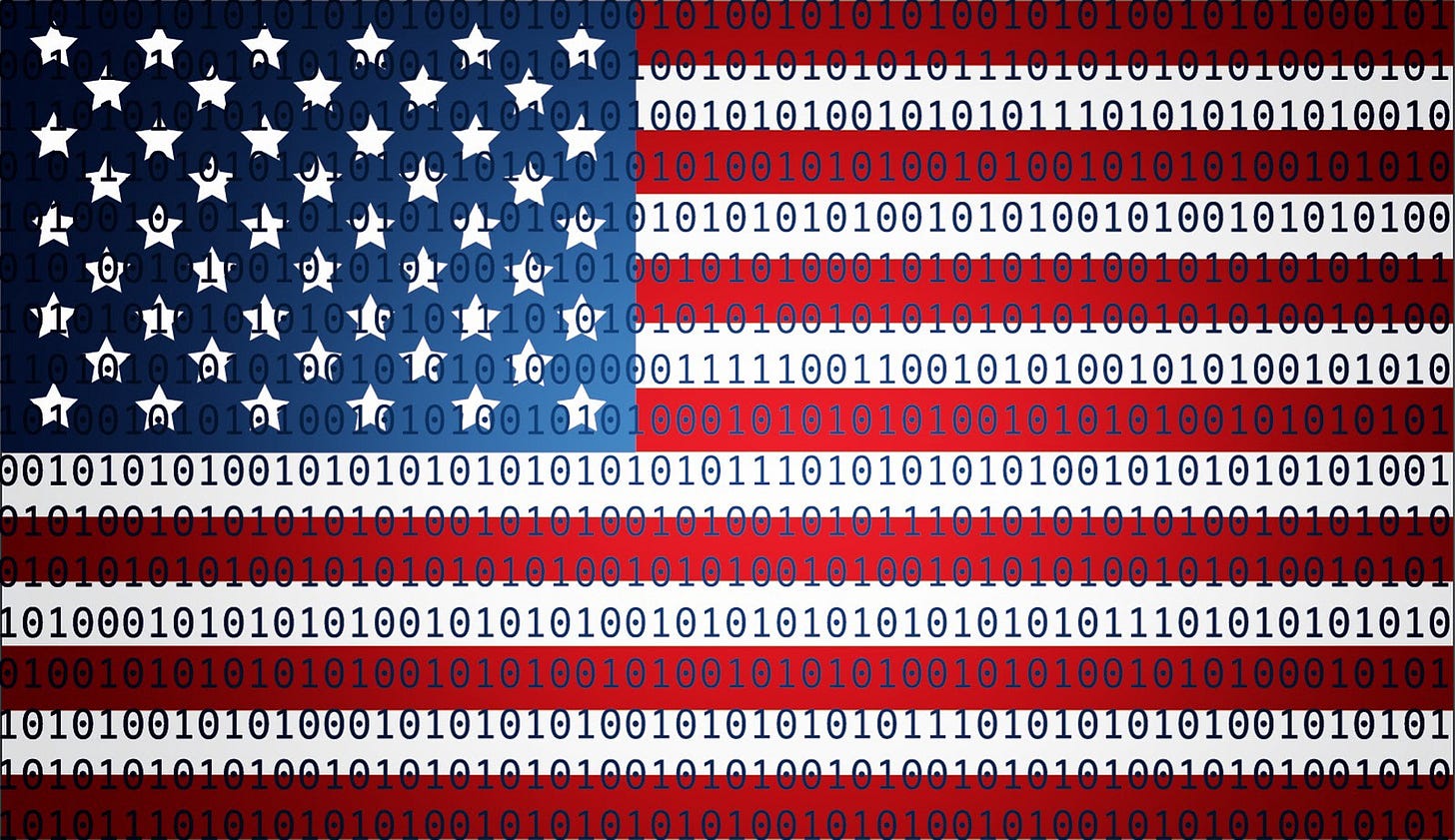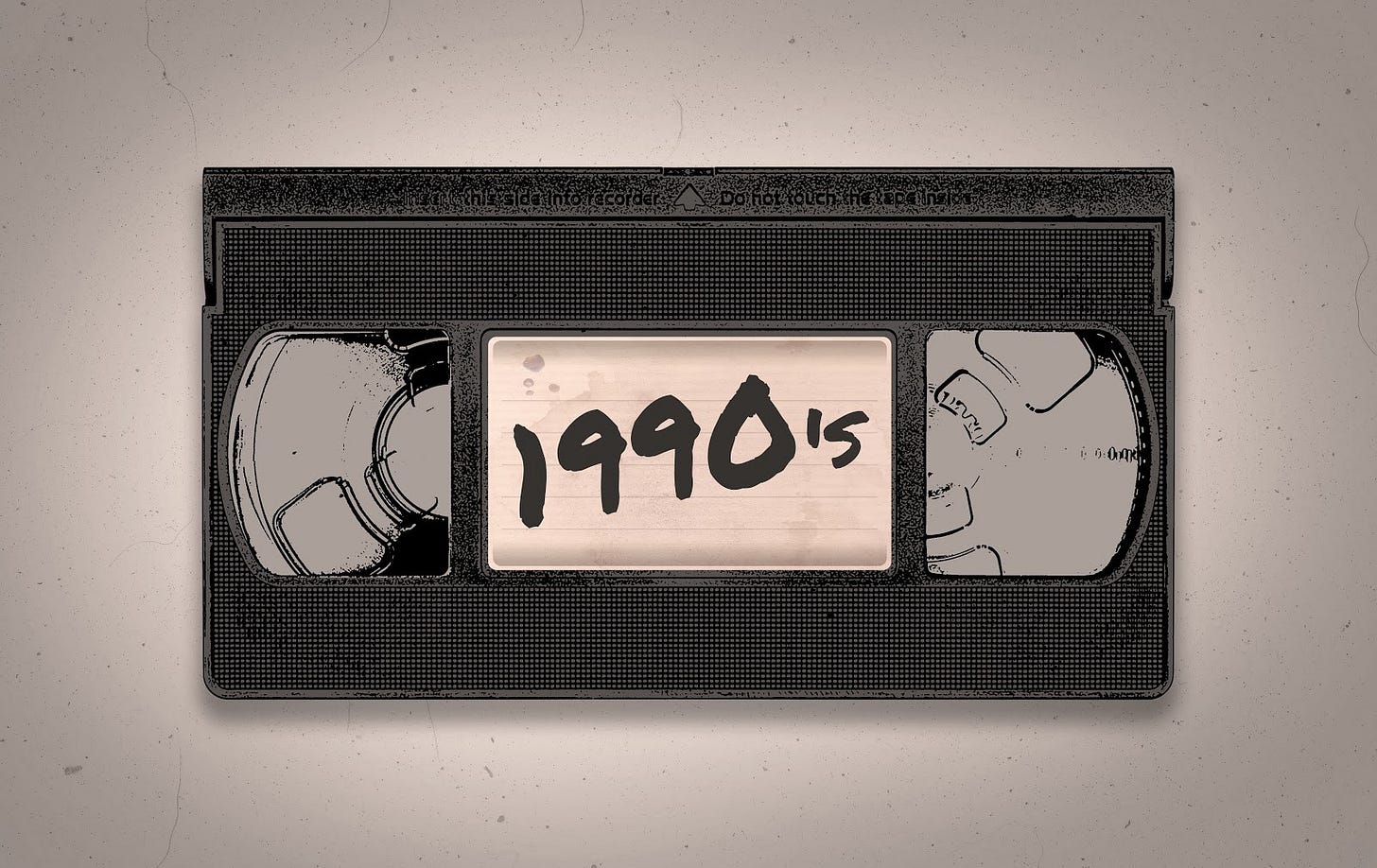The 1st Amendment: Constitutional and Policy Arguments in Crypto
Can a Smart Contract be considered Free Speech?
By James McCall, I Love agriculture, finance, and law Not legal advice. DAO things w/ @lex_dao @farmapper
Join the Global Coin Research Network now and contribute your thoughts!
If you’d like to learn about crypto, join our Discord channel and be kept up to date with the latest investment research, breaking news and content, Crypto community happenings around the world!

Congress shall make no law respecting an establishment of religion, or prohibiting the free exercise thereof, or abridging the freedom of speech, or of the press; or the right of the people peaceably to assemble, and to petition the Government for a redress of grievances.U. S. Const. 1st Amendment
The 1st Amendment is also a powerful shield granting citizens the right to free speech and association, etc. What are some arguments that proponents of the 1st might apply to cryptographic transactions? Code is speech obviously that is understandable by computers and written by humans. It is also the other way around, where the code can be understandable by both computers and humans, for an example see Ricardian contracts. Is a smart contract free speech? Is it protected by the 1st amendment? What if it is political, or has legitimate purposes, but also illegitimate ones?
The areas where blockchains and regulatory authorities collide are going to test the limits of constitutional restraints on speech and illuminate various new lines of demarcation. Ethereum, and bitcoin and other “immutable” and “uncensorable” blockchains bring up some really interesting free speech issues. In this area, it may first be useful analyzing cases involving 3D printer designs for firearms. Taking the right to free speech and the right to bear arms together, law abiding citizens can make 3D code that print legal firearms. This is the case, even if it is possible for actors to “illegally” obtain the design and print.
DEFENSE DISTRIBUTED MEET NEW JERSEY
In brief the question is whether the code to a 3d design to print a handgun via a 3D printer is speech protected by the first amendment. Therefore, restraining certain governmental actors from curtailing the right to make the “information” itself available. These cases and policy arguments are persuasively argued here How 3D Guns Became a Free Speech Issue, by Amy Swearer at the Heritage Foundation.
It should be noted that whether “code” is free speech that is constitutionally protected can turn on the facts and circumstances. As the Fifth Circuit stated in Defense Distributed that “Everything discussed above is legal for United States citizens and will remain legal for United States citizens regardless of the outcome of this case.” The case follows a line of free speech arguments that would likely echo many “smart contracts” as free speech with any curtailment of which would be seen as a prior restraint on free speech.
In short, Defense Distributed was sued and a preliminary injunction was sought by nine Attorneys General, including New Jersey Attorney General Grewal, to enjoin(stop) the release of Defense Distributed’s files with the 3D designs. Shortly after the temporary injunction Defense Distributed filed in state court in Texas. Obviously a more favorable venue for 2A arguments. The Defense Distributed cases have continued to bounce around and interested readers can learn more at this Fifth Circuit ruling that is allowing the case to proceed in Texas state court against the New Jersey attorney general actions.
“Grewal’s assertion of legal authority is much broader. He does not cabin his request by commanding the plaintiffs to stop publishing materials to New Jersey residents; he instead demands that the plaintiffs cease publication of their materials generally. For example, in his cease-and-desist letter, Grewal states that the plaintiffs’ “widespread dissemination of printable-gun computer files is negligent because it encourages an illegal gun market, which will foreseeably lead to increased crime and violence in New Jersey.” He accordingly requests that Defense Distributed “halt publication of the printable-gun computer files” without specifying that Defense Distributed cease marketing its materials to New Jersey residents.”
Clearly state authorities are masters of the nudge too. But the federal system in the United States does present some checks and balances as states can at least battle each other on two sides of an issue. One could argue that the theory of the founding fathers was to an extent to decentralize power, and yet, keep enough centralization that things could get done. Therefore, having states move to regulate, and set parameters for blockchain and decentralized networks (yeah, we see you Wyoming) will provide toeholds and safe harbors to explore legitimate use cases for code, speech, smart contracts, etc.
So the Defense Distributed cases were regarded as a prior restraint on a legitimate use case. What does a prior restraint on a “illegitimate” or illegal use case look like?
MOVIE INDUSTRY VERSUS FREE SPEECH

As a little history we go back to the fresh 1990’s with the passing of the anti-trafficking provisions of the Digital Millennium Copyright Act (“DMCA”), which Congress enacted in 1998 to strengthen copyright protection in the digital age. The short version is that the defendants figured out a decryption program that would “remove” the DCMA encryption that prevents the “copying” of the data on the DVD. The germane part for our purposes is the argument of whether the movie industry could prevent both the hosting of the program, but also the “linking” to other websites where the decryption code was being hosted. Whack all the moles, before they rear their heads.
Corley, the “hacker” defendant, published an article demonstrating the program and how the encryption was cracked. The article detailed that it could be used to “copy” DVD’s and at the end of the article, the Defendants posted copies of the object and source code of the program. The 2nd Circuit in the case Universal City Studios, Inc. v. Corley, 273 F. 3d 429?—?Court of Appeals, 2nd Circuit 2001 discussed the differences between object code, as the 1’s and 0’s that computers speak, and source code, the programming languages that programmers use to make programs that the computer runs. The movie industry didn’t like that their encryption was cracked and that the decryption program could be used to copy DVD’s and circumvent the copyright protections.
In reviewing the case on appeal, the 2nd circuit found that code is speech and protected as such under the 1st Amendment. “Computer programs are not exempted from the category of First Amendment speech simply because their instructions require use of a computer. A recipe is no less “speech” because it calls for the use of an oven, and a musical score is no less “speech” because it specifies performance on an electric guitar.”
But finding that “code” is speech capable of free speech protection does not automatically give it protection, especially if the function of the code is for illegal activity. Next they cited their reasoning, similar to Oppenheimer when nuclear technology was invented, that once technology is invented it is impossible to really go back.

They 2nd Circuit cited Judge Kaplan from the circuit court’s reasoning extensively in finding that the function of the code (speech) was to circumvent the law.
“Once a decryption program like DeCSS is written, it quickly can be sent all over the world. Every recipient is capable not only of decrypting and perfectly copying plaintiffs’ copyrighted DVDs, but also of retransmitting perfect copies of DeCSS and thus enabling every recipient to do the same. They likewise are capable of transmitting perfect copies of the decrypted DVD. The process potentially is exponential rather than linear…..These considerations drastically alter consideration of the causal link between dissemination of computer programs such as this and their illicit use. Causation in the law ultimately involves practical policy judgments. Here, dissemination itself carries very substantial risk of imminent harm because the mechanism is so unusual by which dissemination of means of circumventing access controls to copyrighted works threatens to produce virtually unstoppable infringement of copyright. In consequence, the causal link between the dissemination of circumvention computer programs and their improper use is more than sufficiently close to warrant selection of a level of constitutional scrutiny based on the programs’ functionality.”
So yes code is speech, but what is its functionality? Here the clear functionality of the code was to decrypt and circumvent the information to allow copying of the DVD against the DCMA. In looking at whether a prior restraint of speech is applicable to prevent the “posting” on a website of the code, and in turn prevent “linking” to other sites that had the code, the 2nd circuit court analyzed that “a content-neutral regulation need not employ the least restrictive means of accomplishing the governmental objective. It need only avoid burdening “substantially more speech than is necessary to further the government’s legitimate interests.” The prohibition on the Defendants’ posting of DeCSS satisfied that standard at least as set by the 2nd Circuit. The Hobson’s choice of either damaging free speech rights via prior restraint or the harm to the intellectual property rights of the movie industry was discussed as follows:
This reality obliges courts considering First Amendment claims in the context of the pending case to choose between two unattractive alternatives: either tolerate some impairment of communication in order to permit Congress to prohibit decryption that may lawfully be prevented, or tolerate some decryption in order to avoid some impairment of communication. Although the parties dispute the extent of impairment of communication if the injunction is upheld and the extent of decryption if it is vacated, and differ on the availability and effectiveness of techniques for minimizing both consequences, the fundamental choice between impairing some communication and tolerating decryption cannot be entirely avoided.
In other words, the court is forced to weigh cats and dogs and determine which is the greater harm, the damage to “free speech”, or to the damage to the legal rights and the law that letting the cat out of the bag does through the “function” of the code/speech. It should be noted that this case did not make it to the Supreme Court of the United States.
It is clear that there are many limits to free speech that are not protected, see terrorism, and sedition, etc. That said, it will be interesting if code “notes” and “readme” will make for useful avenues for cyberpunk ideals and free speech arguments. For open source systems might serve as “political speech” protecting the code as part of a political argument for change. Who is to say if a person in Argentina or New Zealand, or Wyoming decides to publish the code to the Ethereum Blockchain that makes it available for anyone with access to the network to interact with. The Ethereum commons much like the internet before it, is nation stateless, perhaps even more so through the decentralization of the nodes that publish the “smart” contract to the blockchain.
These issues are really not new. There have been ebbs and flows as battles over encryption, privacy, and law enforcement all battle for the upper hand in policy and regulations that make up the law. This 1999 speech from Ira Magaziner a sorta Internet Zsar has many nuggets, but this seems so interchangeable with issues today, it bears quoting.
“There are some who believe that it is inevitable and desirable that unlimited encryption be made available. There are others who believe that, because of law enforcement concerns, there must be controls on encryption technologies. The debate among policymakers has lasted for years, and I cannot pretend that we are close to resolving this conflict.
I do not agree with the policy that we have. Although I believe that the concerns of law enforcement are legitimate and sincerely held, the way in which law enforcement is trying to deal with encryption will not really work and will do a lot of harm. That is my own personal view. I think strong encryption is necessary for the Internet to flourish commercially and to ensure personal privacy, freedom and security. I believe that law enforcement authorities need to find other ways to do their important work.
We have been searching for some compromise solutions that will meet the concerns of law enforcement but still allow high-level encryption to be used to give the Internet the security and privacy it needs. I do not want to leave the impression that this debate is a cynical or political one. I think it is a real disagreement. And I, like any number in the Administration, voice my opinions. I think my opinions are taken seriously on the issues I am involved in, but I do not always prevail. And this is one where I have not prevailed.”
Prior restraint on Ethereum via temporary injunctions
To the extent that a court does issue a “temporary injunction” to restrain the release of code or a smart contract. How does this work in practice? Do they issue it to node operators? Try to twist arms of the various Ethereum clients to push software that allows censorship?
One perhaps illustrative example is the playbook used by New Jersey, Attorney General Grewal against Defense Distributed:
- Sent cease-and-desist letter threatening legal action if Defense Distributed published its files;
- Sent letters to third-party internet service providers based in California urging them to terminate their contracts with Defense Distributed
- Initiated civil lawsuit against Defense Distributed in New Jersey
- Threatened Defense Distributed with criminal sanctions at a live press conference.
In other words, they could serve internet service providers, Ethereum or Bitcoin node operators, threaten both civil and criminal allegations against the purveyor of the code as speech. It would appear that having concentration of mining rigs and especially large custodial staking operations is a regulatory vector. So imagine a world where a company such as Coinbase has a large percentage of the tokens of the network, that are staked with a Coinbase validator. It isn’t hard to imagine that certain regulators/authorities could try and prevent the “validator” from validating the block that has the smart contract that is subject to the temporary injunction. Wherever it is possible to apply leverage, it will be. Analyzing under Murphy’s laws
- What can go wrong will go wrong, and
- He with the gold makes the rules, and
- A Smith and Wesson trumps four aces.

From looking at the constitutional arguments that are made, it should be clear that this story is decades in the making. The Defense Distributed cases have spanned a number of years and any arguments will take deep pockets and commitment to reach the usual pattern of “circuit court” split and then certiorari by the Supreme Court. It is a fine line between being a patriot and being someone’s patzi. The politically charged defendant in Defense Distributed obviously has the support, the stamina, and the zealousness to ride the political statement all the way through the process of entering the prosecutorial arena. Plus they have a legitimate and legal interest to protect.
Is money itself Speech?
What if money is sent through a “mixer” on its way to advertise for political speech?
Can mixers be used to violate election laws, or simply used privacy coin AEC’s to protect privacy associated with political donations. At some level, money itself and political donation has an interesting and growing space as political action and speech. Not to be addressed in any fashion here, but Citizens United v. Federal Election Commission, 558 U.S. 310 (2010), was a landmark decision of the Supreme Court of the United States concerning campaign finance. The Court held that the free speech clause of the First Amendment prohibits the government from restricting independent expenditures for political communications by corporations, including nonprofit corporations, labor unions, and other associations. This is more the corporations speech is still speech argument. Maybe the topic for a future article.
How to Shape LexDAO Collective and Future Articles?
If you want more, pick up some LEX to signal direction of LexDAO Collective through the LexDAO Collective community token LEX as shown in github.
Much will fall on the battle of the narratives. For more check out earlier articles in this series on the 4th Amendment and how regulators get people to give up their rights on the front end, the Nudge. For good actors to explain the importance of privacy, and the legitimate reasons for it. Maybe people don’t want their political views on chain, maybe they made a donation to a candidate, or are actually encoding political speech on chain. Maybe they have a trade they don’t want public or else the other side can rally against and liquidate the position. Ultimately right to privacy is only a right if we expect it, demand it, and battle to protect it.
You were promised potential constitutional arguments, and you will get them first if you subscribe to the LexDAO substack.
It should be made clear that the thoughts of LexDAO are not represented here. In fact, LexDAOism is a publication meant for arguments of all issues, pros and cons. Would love to have someone argue the counter points.
All links provided are for informational purposes only and not meant as recommendations of the people or products. Nothing herein is legal or financial advice and should not be relied upon without reaching out to your own personal attorney. The linked ABA disclaimer is appended to the blog.
LexDAO is a non-profit association of legal engineering professionals that brings the traditional legal settlement layer to code, and coded agreements to the masses. We believe that everyone deserves access to justice provided in a quick and efficient manner. If legal services were easier to use, verify, and enforce, we could live in a fairer world. Blockchain technology offers solutions to many problems in the legal space. Our mission is to research, develop and evangelize first-class legal methods and blockchain protocols that secure rules and promises with code rather than trust. We do this by training LexDAO certified legal engineers and building LexDAO certified blockchain applications. We strive to balance new deterministic tools with the equitable considerations of law to better serve our clients, allies, and ultimately citizens.

lexDAO.chat to discuss more
To be continued…..with more interesting discussions around 1st Amendment….












